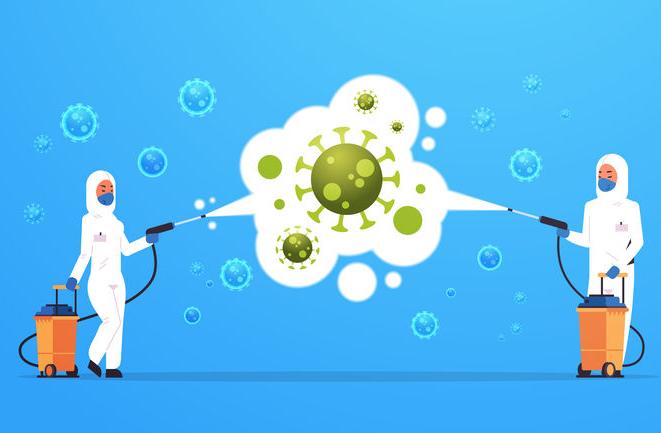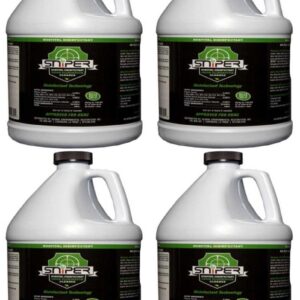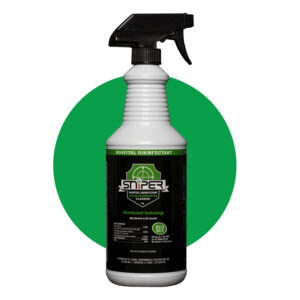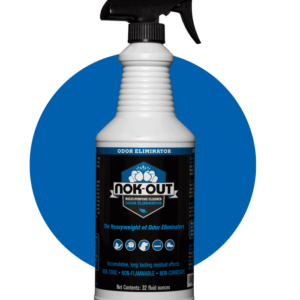If this current outbreak of Covid-19 had happened five or six hundred years ago, we would be reading about it in textbooks alongside the histories of the black plague or the bubonic plague. Today, however, we have tools to fight the spread of infection. We have masks, personal protection equipment, and – disinfectants. Not all disinfectants are equal and some are highly abrasive, leaving behind residues that are toxic to pets and people. Such abrasive products limit your ability to treat all surfaces. Understanding how and where to apply disinfecting products can help you evaluate what products you want to use in your home and workplace. Keep your work and home spaces safe regardless of whether it is Covid-19, the common flu, Canine Parvovirus, or bacterial infections. Use a spray-everywhere disinfectant to keep your home and family safe.
There are currently over 400 products on the CDC/EPA ‘N’ list of disinfectant products that consumers and professionals can use against SARS-CoV-2 (COVID-19). Most of the products on the N list fall into one of these active-ingredient categories:
- Bleach (sodium hypochlorite)
- Quaternary Ammonium in high concentration
- Alcohol
- Hydrogen Peroxide
- Phenol
Does my disinfectant actually work?
ALL of the products on the N list have been thoroughly tested, are EPA registered, and thus will be effective against the spread of a wide range of bacteria and viruses. But many disinfectants cannot be used as we need to use them because of their harshly abrasive chemical attributes. These attributes are:
- corrosive to surfaces (and therefore need to be wiped away after the appropriate ‘dwell time’)
- highly flammable
- highly toxic to pets and people (and again, need to be wiped away after the appropriate ‘dwell time’)
- leave behind fumes that are highly irritating to nasal and lung tissues
Clearly, some of these products can be dangerous not only to you and your family, but to the surfaces upon which they are applied. Because of inherent dangers in using these highly corrosive and toxic products, we are limited in how we can apply them.
The Most Common – and Least Effective – Application Method
It is quite common to spray only the ‘frequent touch-point’ surfaces such as doorknobs, light switches, etc.. Limiting the places you can spray your disinfectant limits the effectiveness because you are not treating all surfaces, only the ones that people touch frequently. Unfortunately, this is insufficient for the task at hand – stopping the spread of this contagion. Therefore, the ‘cross-contamination’ rate (Transfer of infectious agent or matter from one person or site to another.) will be high. Again, this is insufficient to stop the spread of contagion, because only 20% to 30% of surfaces are being disinfected.
‘Frequent touch point-only’ spraying is common because many disinfectants are highly corrosive to surfaces and can cause real damage that can cost you real money to replace. Most of the “kills in 2 minutes” types of disinfectants will be tremendously corrosive. Especially if you must spray those surfaces frequently. When using a highly corrosive disinfectant onto a surface, you MUST come back within 5 or 10 minutes and wipe that stuff away. Else it will be causing corrosion damage to your equipment. With highly corrosive disinfectants, it is really difficult to come back later to wipe those surfaces down to protect your equipment – and yourselves, your employees, your families. Because let’s face it – when wiping these surfaces down, you will always leave some behind. These are the ‘toxic residues’ that you really want to avoid regular contact with because of harmful effects on your health.
A Better Way
A better way to stop the spread of contagion is to spray all surfaces – ‘spray everywhere’. This is where SNiPER disinfectant excels. It is non-abrasive and non-corrosive, making it ideal to use around pets, people and indoors. The EPA rates ALL disinfectants for toxicity in four areas – to the skin, to eyes, to lungs, and if ingested. SNiPER has received the lowest toxicity rating that the EPA uses – in ALL FOUR CATEGORIES! If you get some on your skin – no problem, it won’t hurt you. Breathing it in does not harm or irritate lung or nasal membrane tissues. Even in testing acute ingestion exposure (swallowing) showed no damaging effects. Although lethal to microorganisms, SNiPER is very safe for application on virtually every surface of your indoor environment. A spray-everywhere application process will give you better results because you won’t miss any germs. Spray everywhere gets all the germs.
Applying SNiPER. It’s easy. It’s thorough.
Because SNiPER is non-abrasive and non-corrosive, it is easy to apply. It is “spray, and walk away”, leaving it to air dry naturally. It’s that easy. And because it is non-corrosive, you can spray everything, and not worry because you don’t have to go back and wipe any residues away. (When spraying fabrics, it is ALWAYS smart to test for colorfastness, by spraying in an inconspicuous area.)
An ‘electric sprayer’ is a machine that gives you control over the droplet size. Using an electric sprayer is a bit like using an air-powered paint sprayer. You point it at the surface and it sprays a cone-shaped spray pattern up to 30 feet (depending on the sprayer you choose to use). So you can literally ‘paint’ all surfaces with a thin coat of disinfectant, ensuring that all surfaces are properly covered with the product. SNiPER is non-corrosive, so you can even spray electronics, keyboards, fabrics, and so on. It is quick and efficient, and that is why the Pro’s use them. Electric sprayers are perfect for when you need to disinfect your entire facility or home, not missing any surfaces. Especially if you need to do this regularly.
You can also apply SNiPER with an ordinary trigger spray bottle for convenience when you do want to disinfect high touch surfaces such as your steering wheel, your phone screen, the sofa. These sprayers are convenient to ‘sanitize’ the place where a visitor sat in your home, or where the repair guy was working on your plumbing, and so on. You can also use pump-up garden-type sprayers for larger areas. Treating “high touch point surfaces” is a good practice for regular maintenance during the day and between “full” or “complete” treatments of your home or facility.
Additional Reading
- Introduction to Chlorine Dioxide
- What Level of Clean is right for you?
- Disinfect – Yes! But dont’ harm your equipment doing it






Can Sniper be used to fumigate hospital and commercial virus contaminated areas, or for preventative measure
Yes – SNiPER is a registered disinfectant that is perfect for hospitals and other contaminated areas.